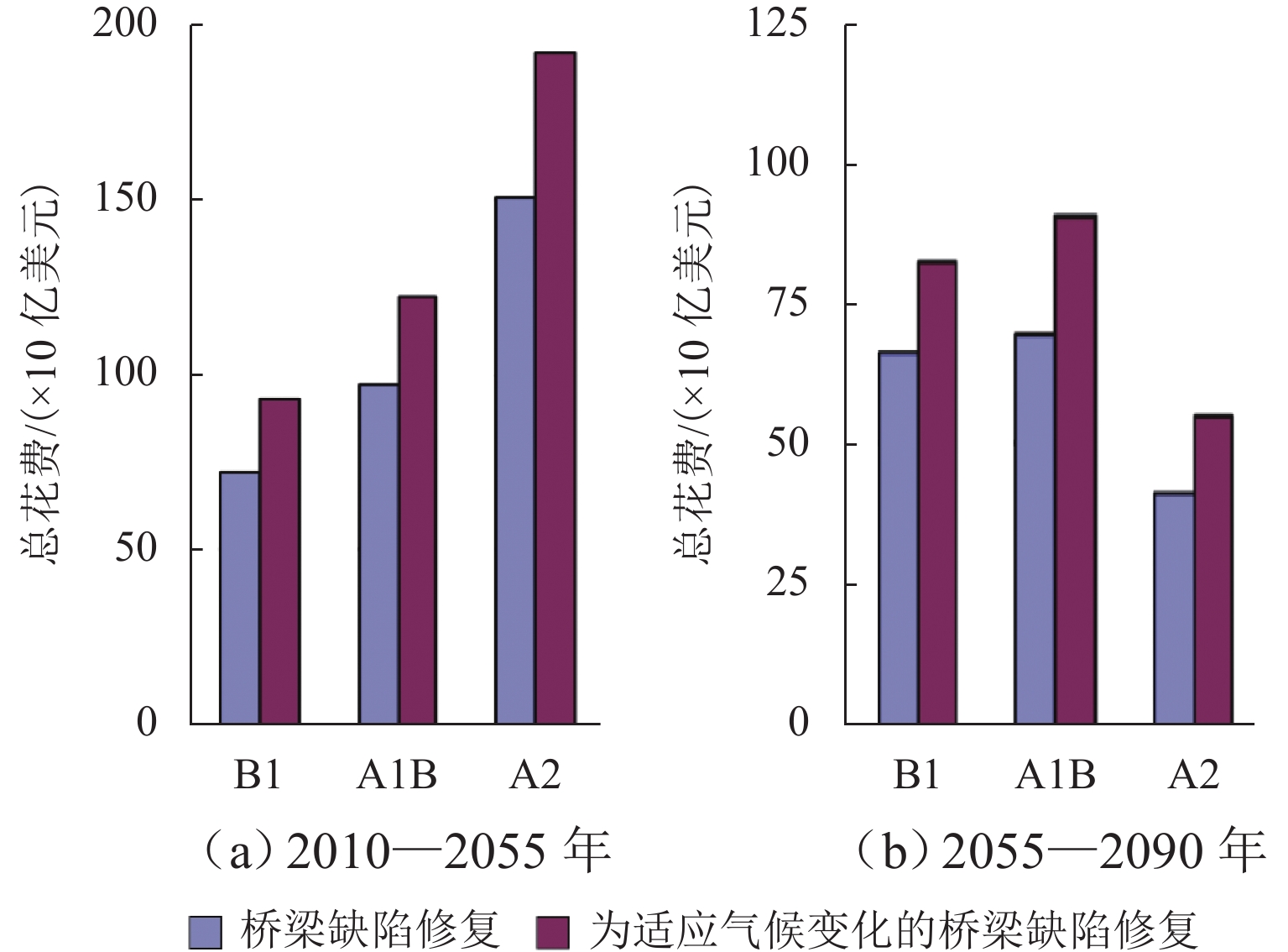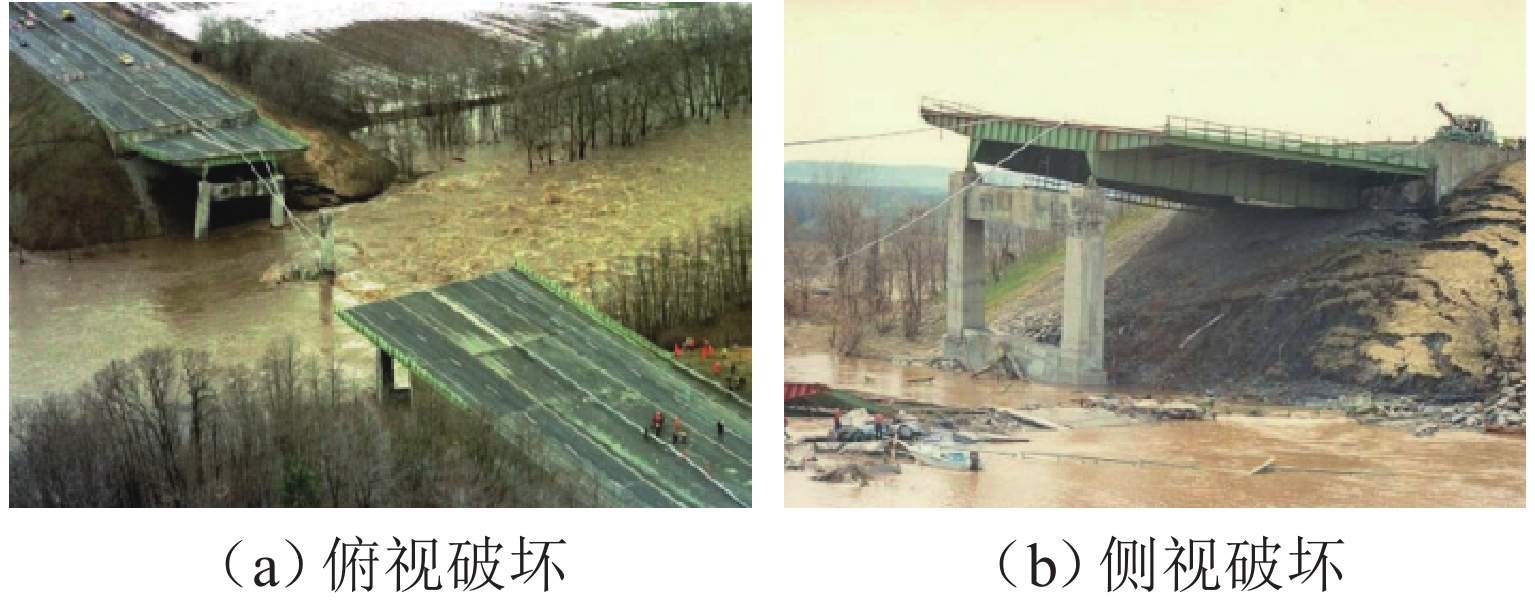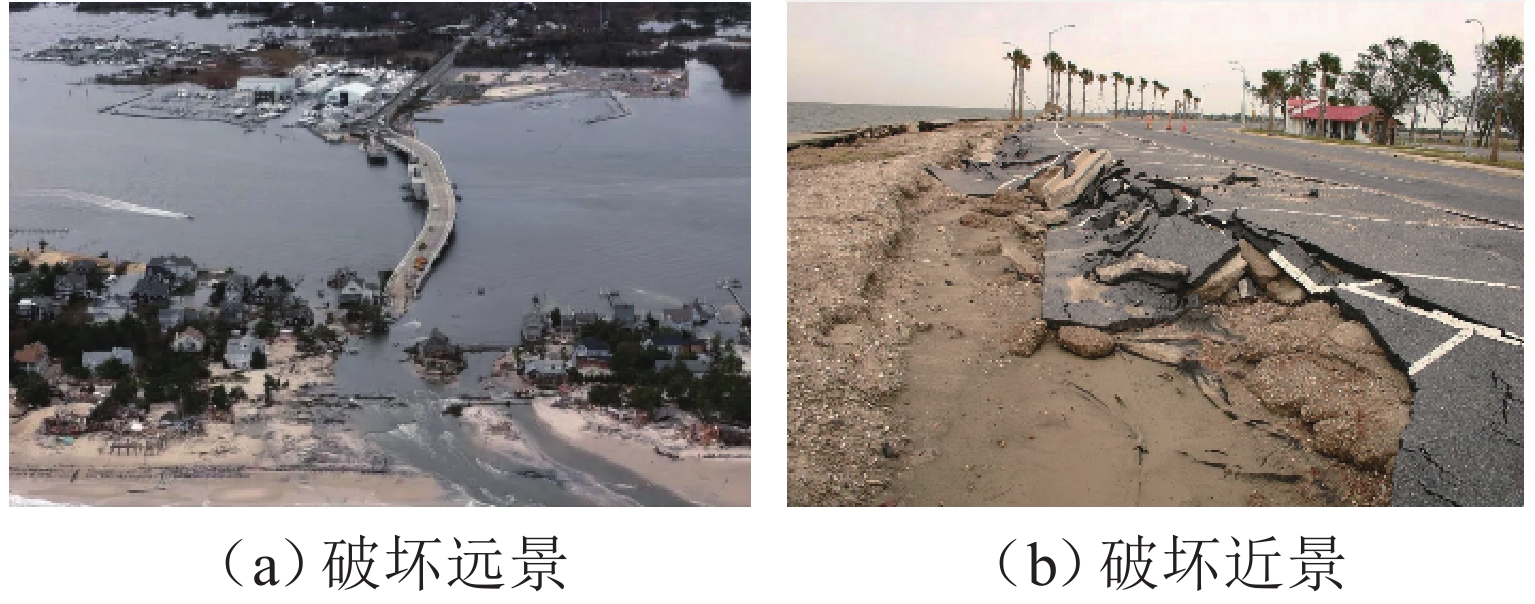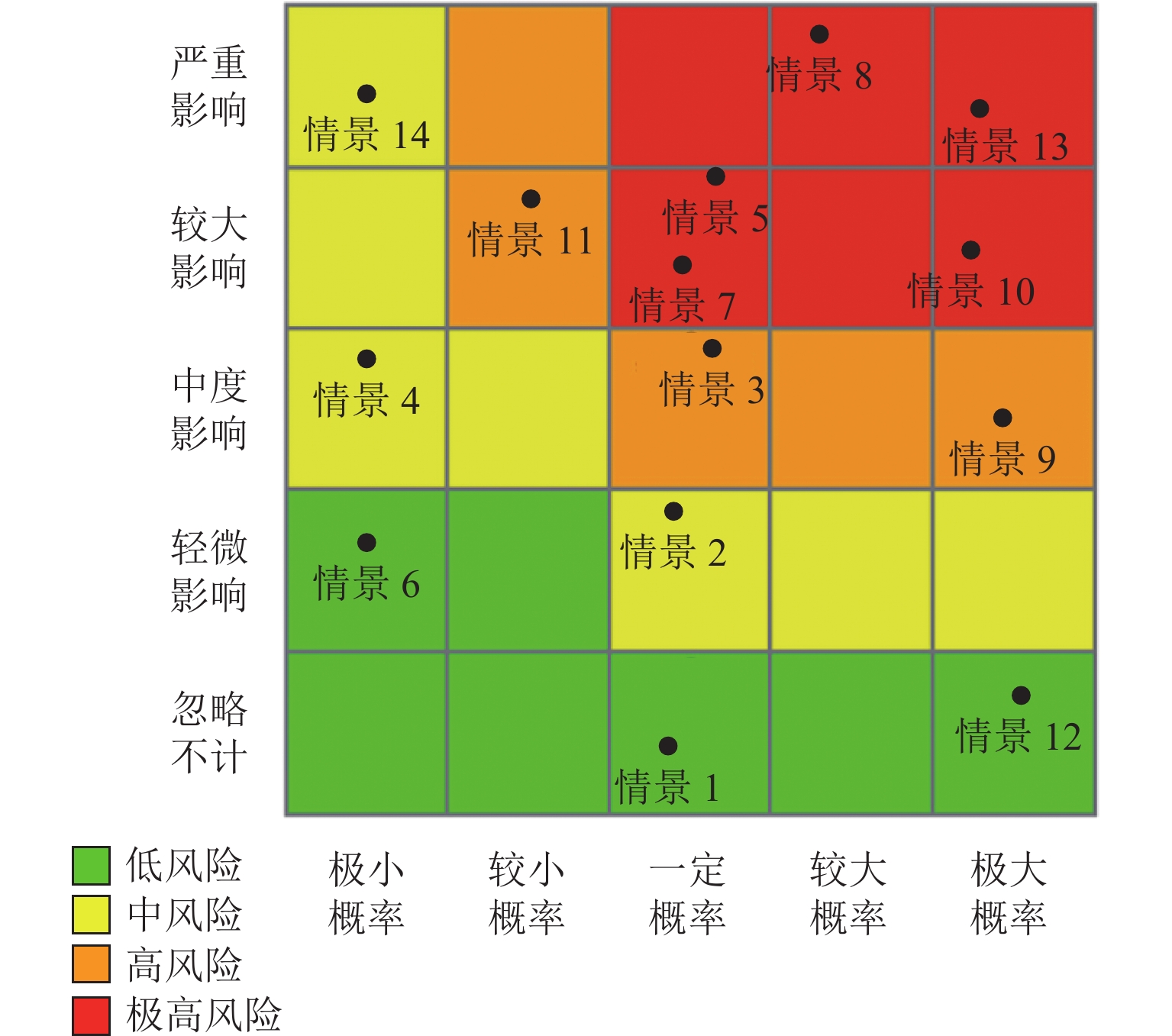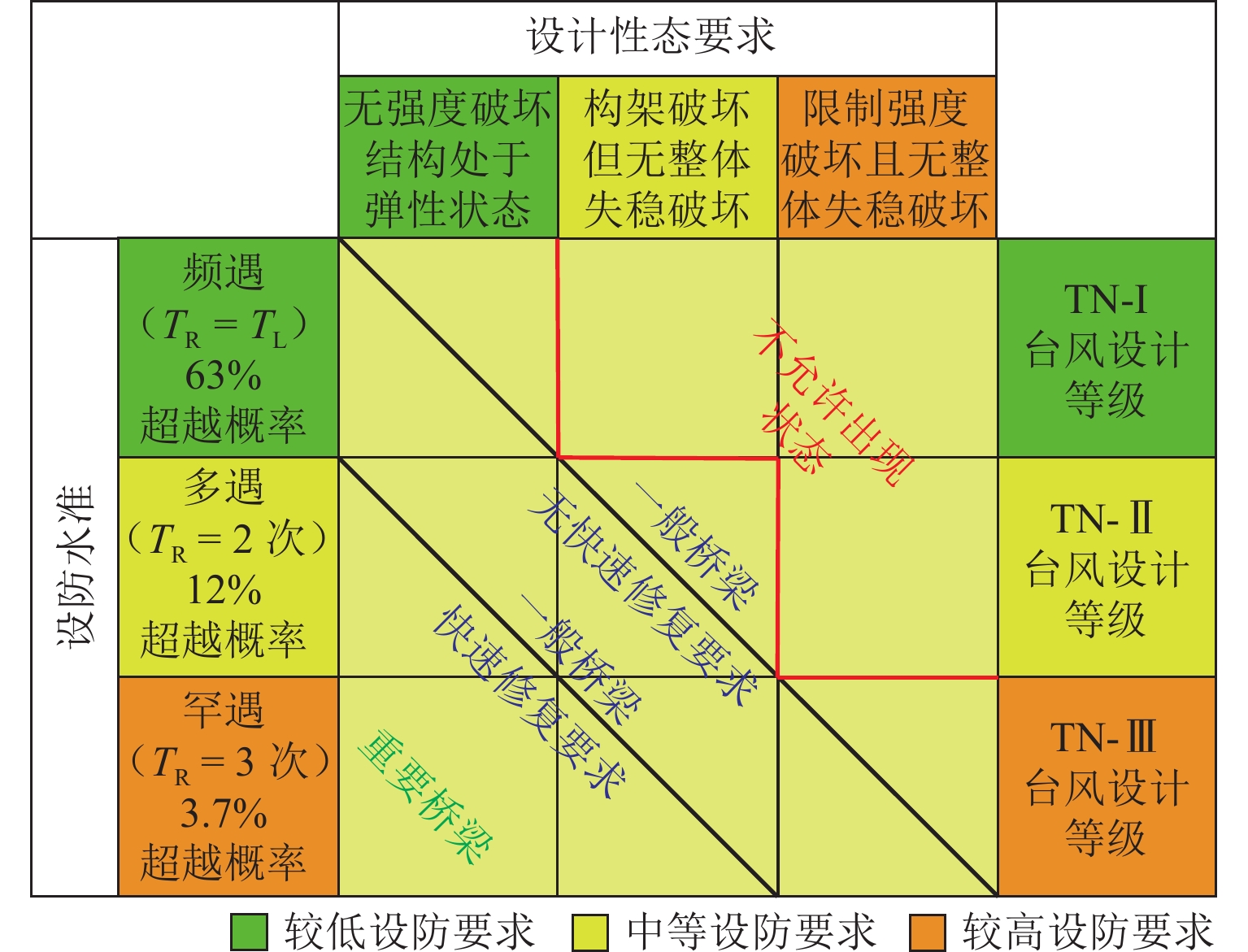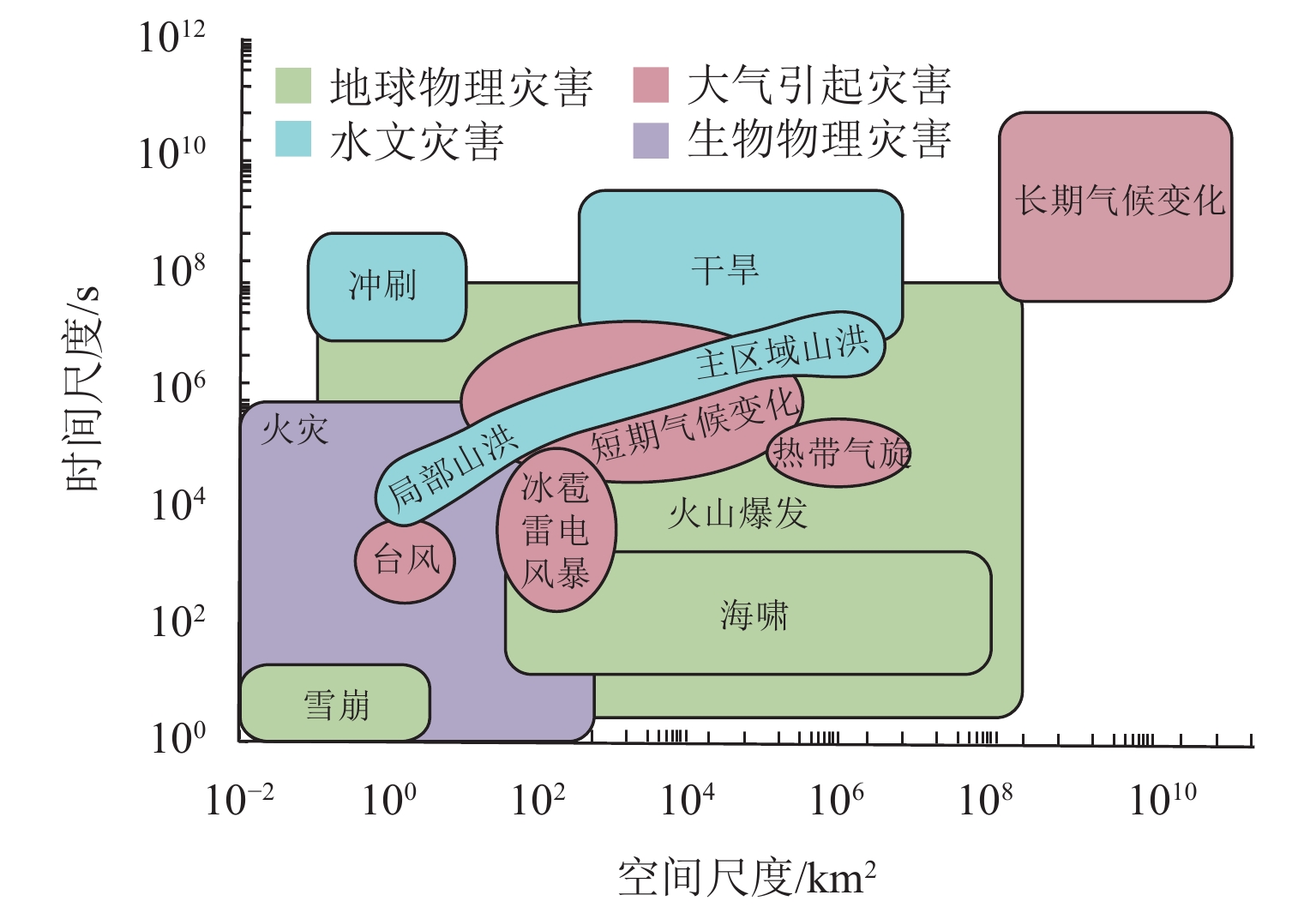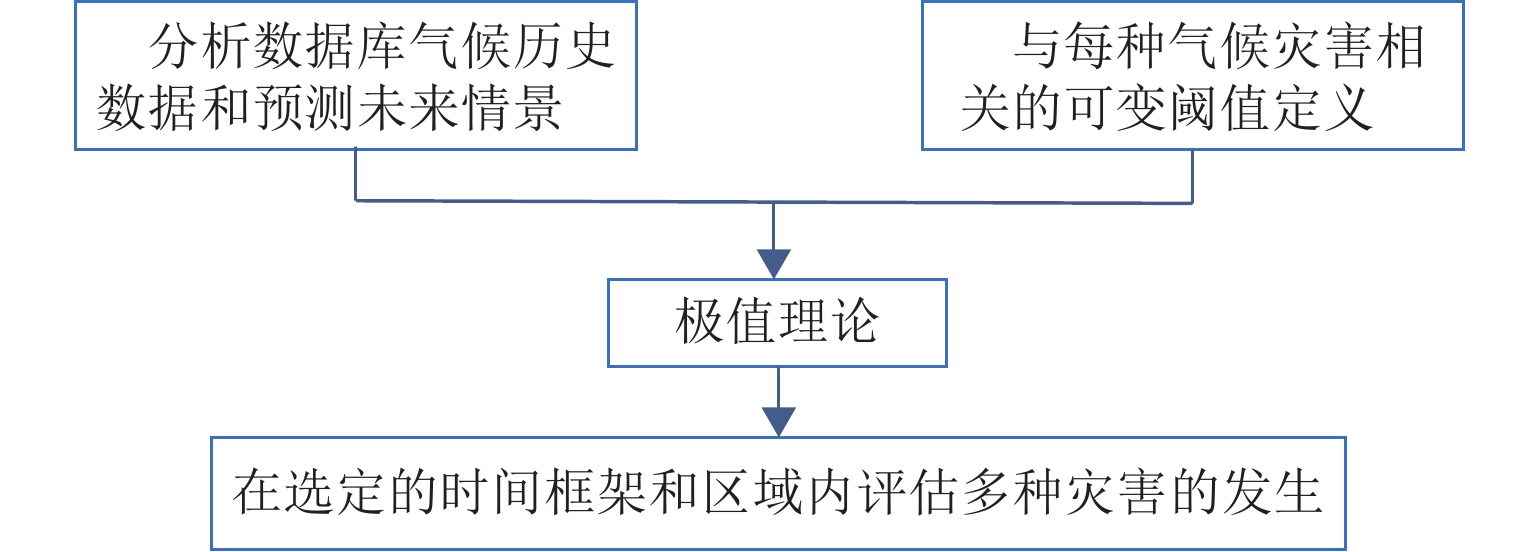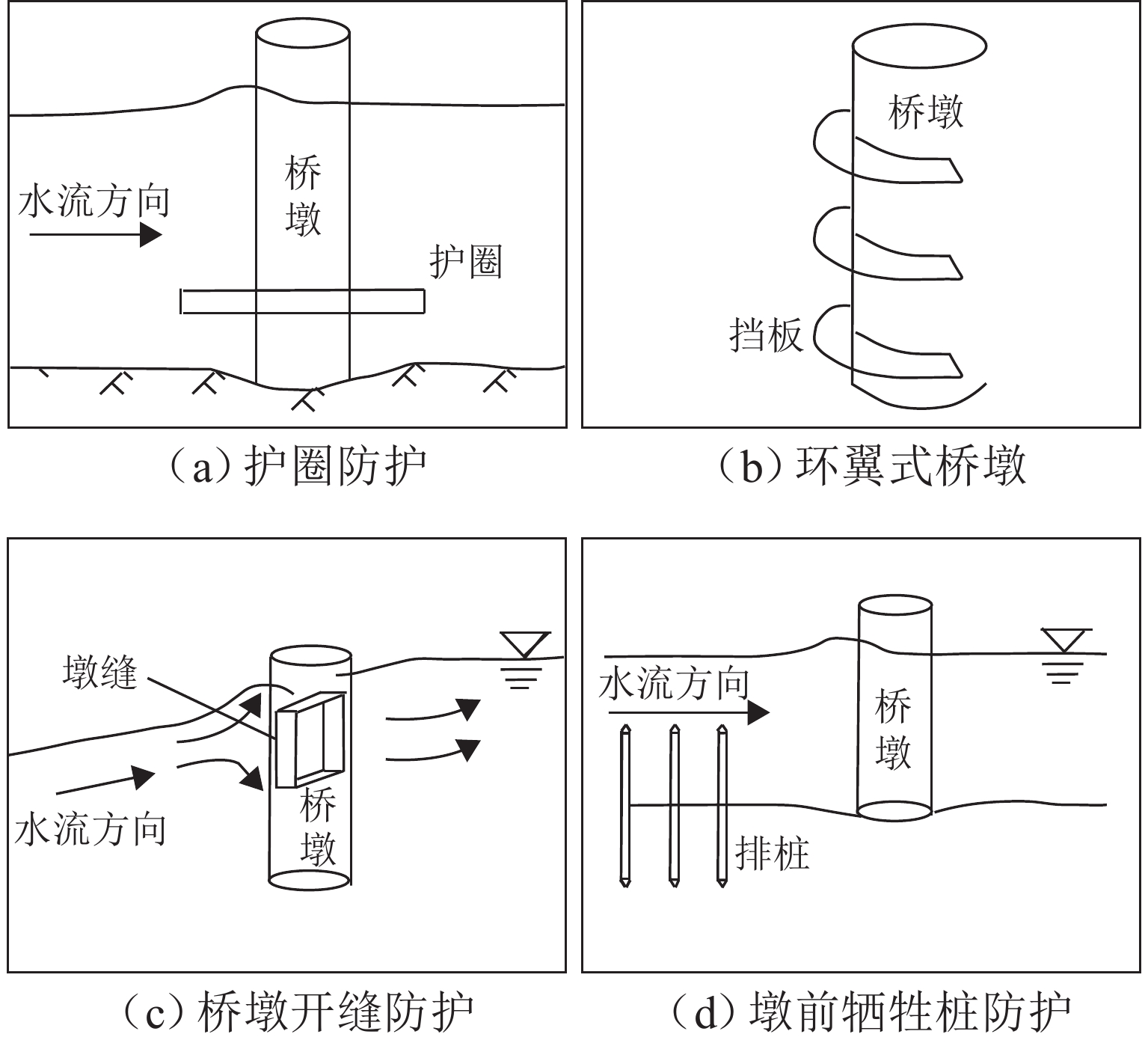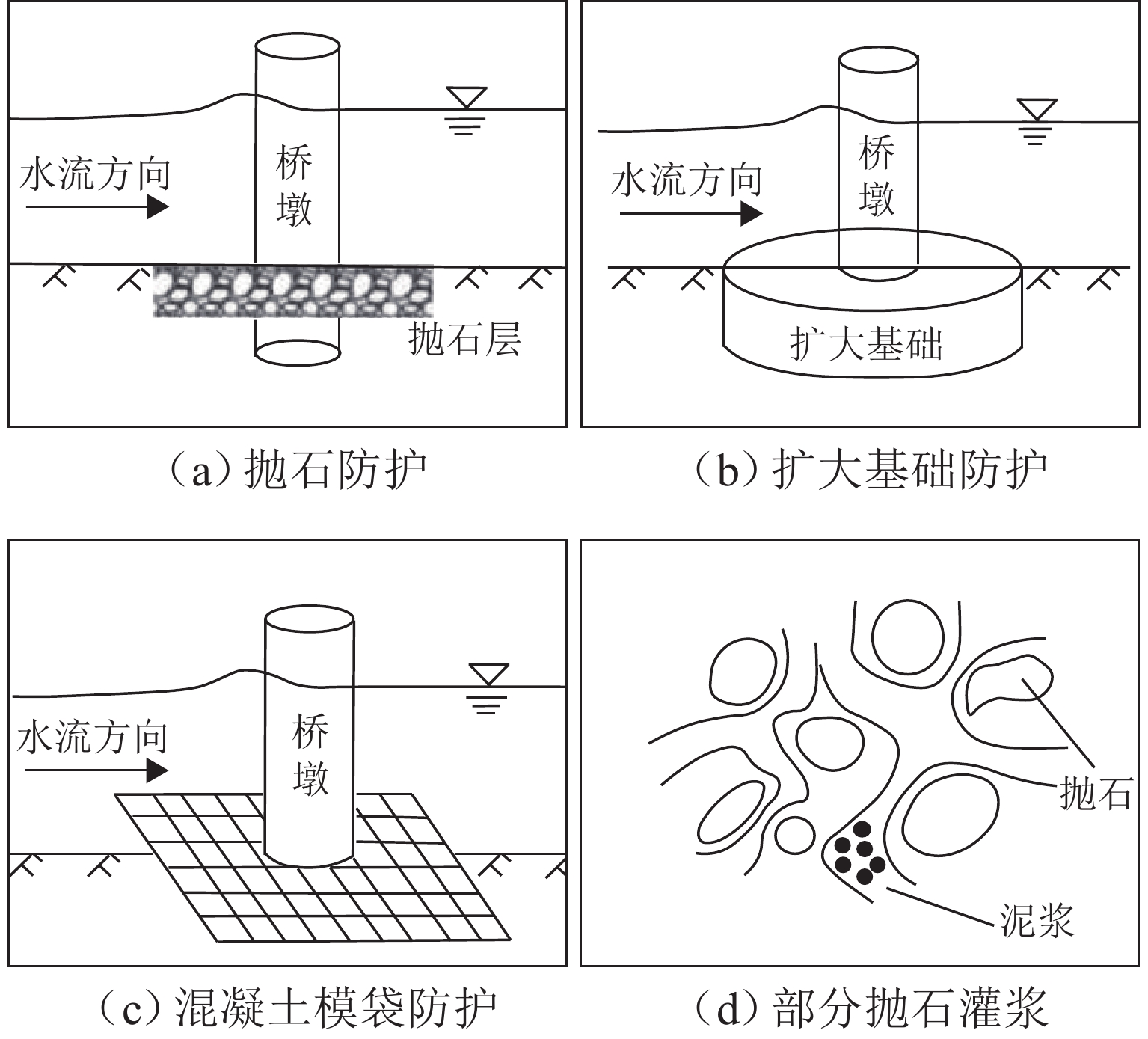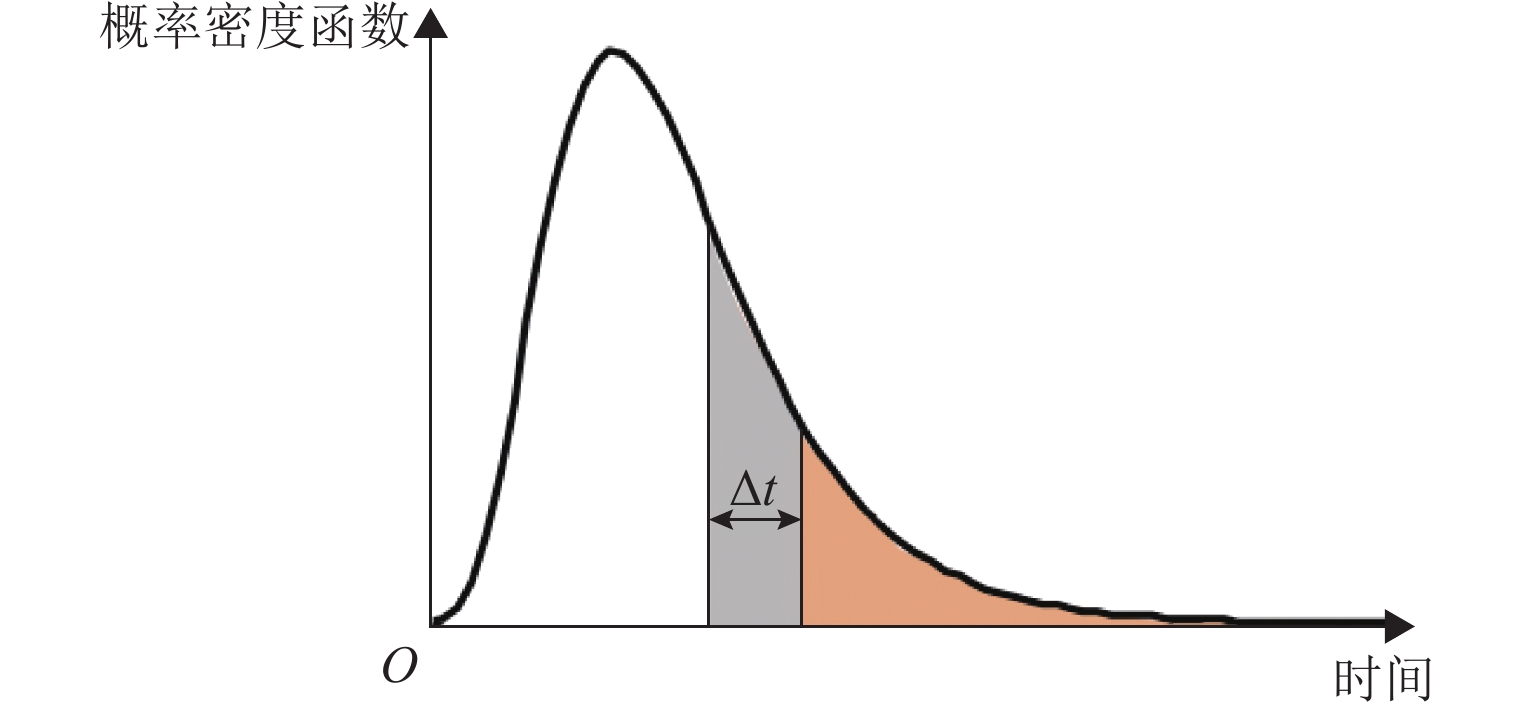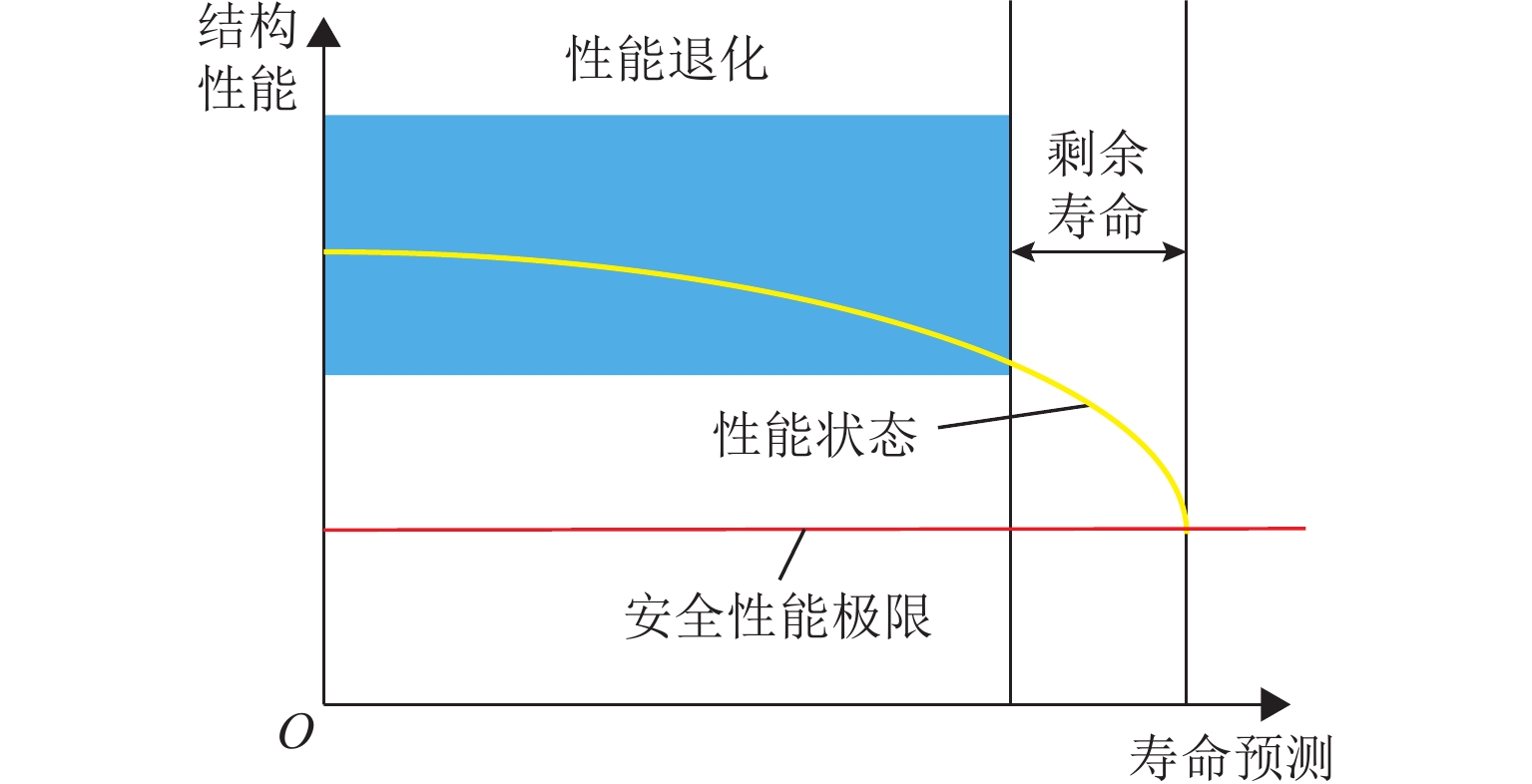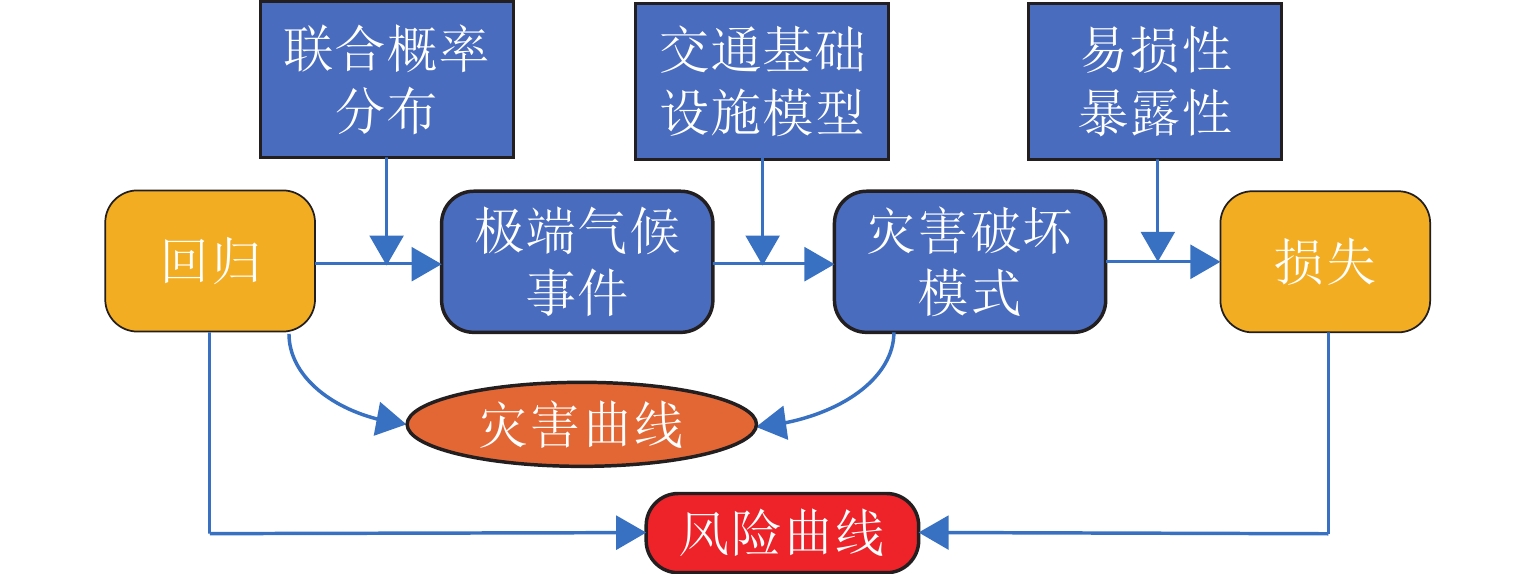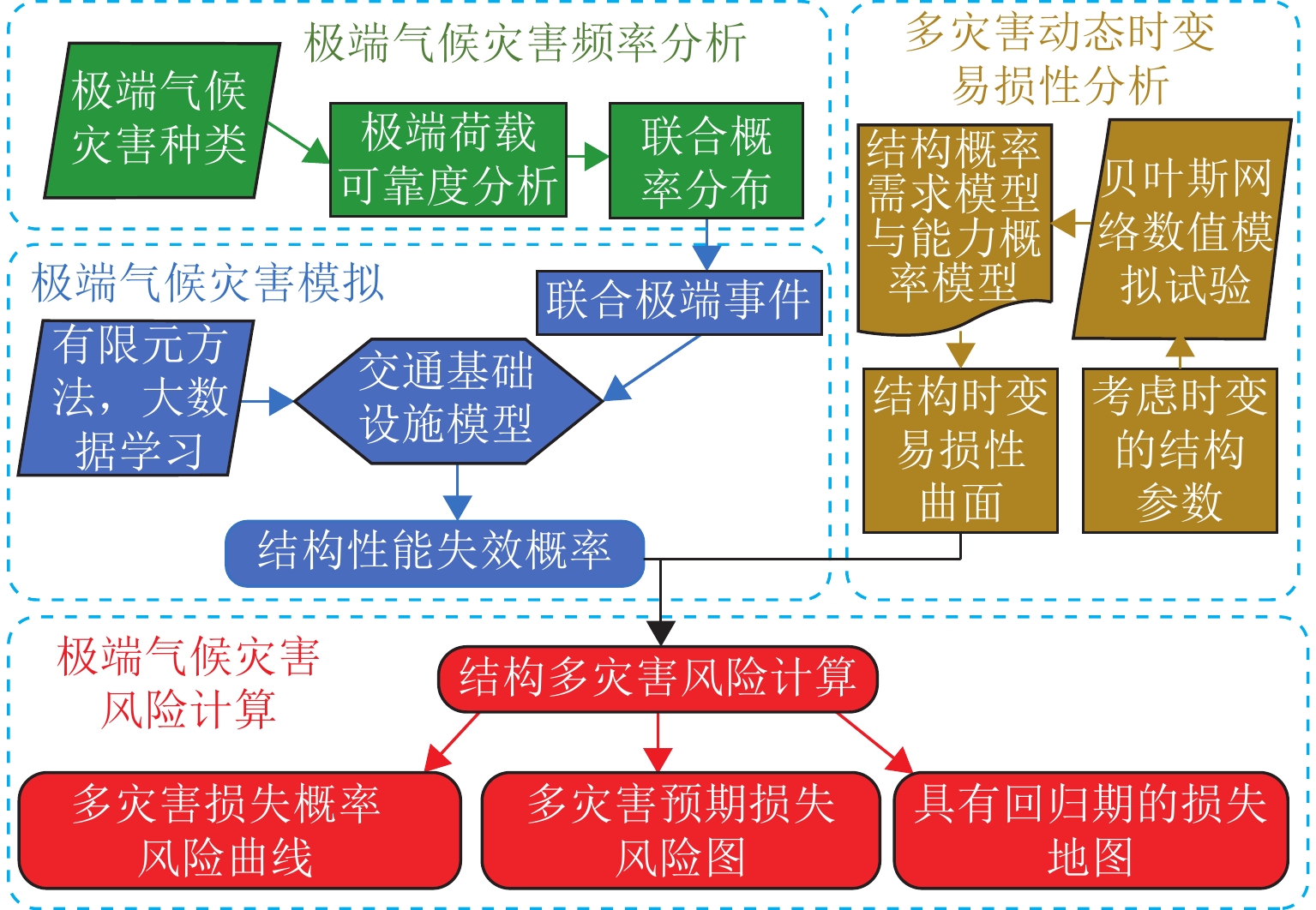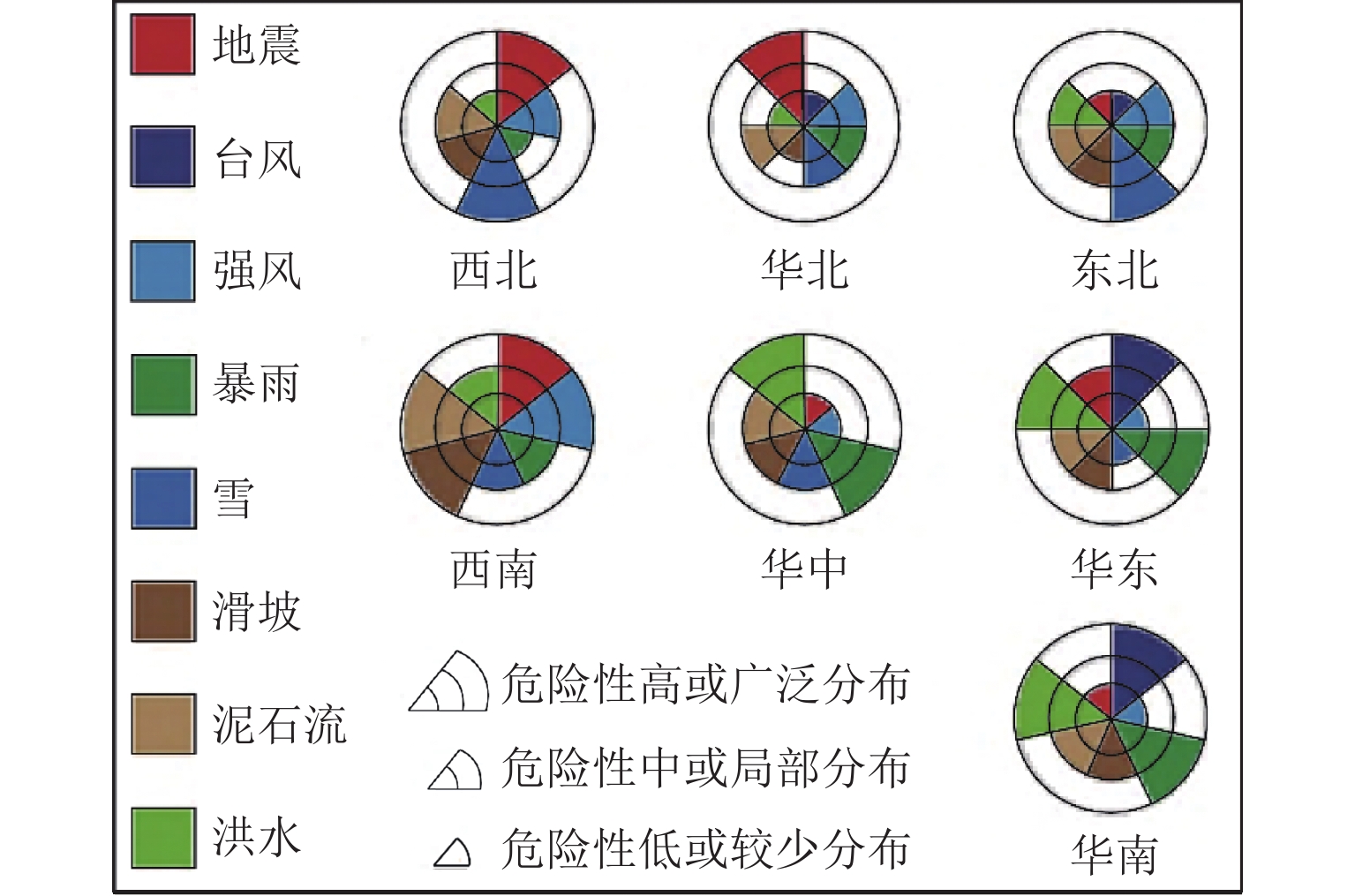Review of Research on Vulnerability of Transportation Infrastructure to Extreme Climatic Conditions
-
摘要:
全球气候变化日益剧烈,极端强降水、高温、低温以及干旱等极端气候事件对现有交通基础设施的运行性能造成影响,甚至导致严重损坏. 与此同时,随着交通强国战略的深入实施,大量新的交通基础设施在恶劣环境中被建设,新建设施的功能性、耐久性和维护管理面临前所未有的挑战. 极端气候荷载变化迅速且难以预测,常常伴随多种灾害的耦合效应,使得交通基础设施在其作用下的破坏机理极为复杂. 为确保极端气候条件下交通基础设施的安全和效能,在国内外极端气候及多灾害耦合研究的基础上,系统梳理了极端气候的时空演变、多灾害耦合作用的研究历程以及多重灾害对工程结构的影响机理. 在此基础上,明确了极端气候影响的特性,并提出交通基础设施在设计、施工和维护阶段的防灾减灾设计原则. 同时,综合总结了在极端气候条件下交通基础设施的多灾害风险评估方法,并对未来的研究方向进行展望,指出利用人工智能和机器学习技术进行极端气候灾害的快速预测和评估,以及在全寿命周期内分析交通基础设施系统性能的变化将成为重要的发展趋势. 为桥梁、道路和隧道等交通基础设施在极端气候条件下的抗灾设计、性能评估和韧性提升提供了宝贵的参考.
Abstract:The intensifying global climate change is increasingly affecting the operational performance of existing transportation infrastructure due to extreme climatic events such as heavy precipitation, high temperatures, low temperatures, and drought, leading to severe damage. Meanwhile, with the further implementation of the strategy of building China with a strong transportation network, a significant number of new transportation infrastructure projects are being constructed in harsh environments, posing unprecedented challenges to the functionality, durability, and maintenance management of these new facilities. The characteristics of extreme climate loads include rapid and unpredictable variations, often accompanied by coupled effects of multiple disasters, rendering the mechanisms of damage to transportation infrastructure under their influence highly complex. To ensure the safety and effectiveness of transportation infrastructure under extreme climatic conditions, Chinese and international research on extreme climate and multi-disaster coupling was studied, and the research progress on spatiotemporal evolution of extreme climates and multi-disaster coupling effects was systematically reviewed. The impact mechanisms of multiple disasters on engineering structures were sorted out. Based on this foundation, the characteristics of extreme climate impacts were defined, and disaster prevention and reduction design principles for transportation infrastructure during the design, construction, and maintenance phases were proposed. Furthermore, methods for assessing multi-disaster risks to transportation infrastructure under extreme climatic conditions were comprehensively summarized, and future research was prospected, highlighting the importance of utilizing artificial intelligence and machine learning technologies for rapid prediction and assessment of extreme climatic disasters and analyzing changes in the performance of transportation infrastructure systems throughout their whole life cycle. This research provides valuable references for the disaster-resistant design, performance assessment, and resilience enhancement of transportation infrastructure such as bridges, roads, and tunnels under extreme climatic conditions.
-
Key words:
- extreme climate /
- transportation infrastructure /
- multi-disaster /
- whole life cycle /
- seismic resilience
-
表 1 未来中国年平均地表气温与降水量(相对1961—1990年平均值)
Table 1. Annual average surface temperature and precipitation in China in the future (relative to average value in 1961–1990)
年份 温度变化/℃ 降水变化% 2020 年 1.3~2.1 2~3 2030 年 1.5~2.8 2050 年 2.3~3.3 5~7 2100 年 3.9~6.0 11~17 -
[1] 丁一汇,任国玉,石广玉,等. 气候变化国家评估报告(Ⅰ): 中国气候变化的历史和未来趋势[J]. 气候变化研究进展,2006,2(1): 3-8.DING Yihui, REN Guoyu, SHI Guangyu, et al. National assessment report of climate change (Ⅰ): climate change in China and its future trend[J]. Climate Change Research, 2006, 2(1): 3-8. [2] 杨肖丽,马慧君,吴凡,等. 基于CMIP6的全球及干旱带干旱时空演变[J]. 水资源保护,2023,39(2):40-49.YANG Xiaoli, MA Huijun, WU Fan, et al. Spatiotemporal evolution of global and arid zone drought based on CMIP6[J]. Water Resources Protection, 2023, 39(2):40-49. [3] HU Q, TANG Z H, ZHANG L, et al. Evaluating climate change adaptation efforts on the US 50 states’ hazard mitigation plans[J]. Natural Hazards, 2018, 92(2):783-804. [4] WRIGHT L, CHINOWSKY P, STRZEPEK K, et al. Estimated effects of climate change on flood vulnerability of U. S. bridges[J]. Mitigation and Adaptation Strategies for Global Change, 2012, 17(8): 39-955. [5] 张存杰,肖潺,李帅,等. 极端气候事件综合危险性等级指标构建及近60年来长江流域极端气候综合分析[J]. 地球物理学报,2023,66(3): 920-938. doi: 10.6038/cjg2022Q0255ZHANG Cunjie, XIAO Chan, LI Shuai, et al. Construction of multi-extreme climate events composite grads index and comprehensive analysis of extreme climate in the Yangtze River Basin from 1961 to 2020[J]. Chinese Journal of Geophysics, 2023, 66(3): 920-938. doi: 10.6038/cjg2022Q0255 [6] TORRESAN S, CRITTO A, RIZZI J, et al. Assessment of coastal vulnerability to climate change hazards at the regional scale: the case study of the North Adriatic Sea[J]. Natural Hazards and Earth System Sciences, 2012, 12(7): 2347-2368. doi: 10.5194/nhess-12-2347-2012 [7] BARBATO M, PETRINI F, UNNIKRISHNAN V U, et al. Performance-Based Hurricane Engineering (PBHE) framework[J]. Structural Safety, 2013, 45: 24-35. doi: 10.1016/j.strusafe.2013.07.002 [8] 张喜刚,田雨,陈艾荣. 多灾害作用下桥梁设计方法研究综述[J]. 中国公路学报,2018,31(9): 7-19. doi: 10.3969/j.issn.1001-7372.2018.09.002ZHANG Xigang, TIAN Yu, CHEN Airong. Review of bridge design method for multiple hazards[J]. China Journal of Highway and Transport, 2018, 31(9): 7-19. doi: 10.3969/j.issn.1001-7372.2018.09.002 [9] GALLINA V, TORRESAN S, CRITTO A, et al. A review of multi-risk methodologies for natural hazards: consequences and challenges for a climate change impact assessment[J]. Journal of Environmental Management, 2016, 168: 123-132. [10] 李宏男,李钢,郑晓伟,等. 工程结构在多灾害耦合作用下的研究进展[J]. 土木工程学报,2021,54(5): 1-14.LI Hongnan, LI Gang, ZHENG Xiaowei, et al. Research progress in engineering structures subject to multiple hazards[J]. China Civil Engineering Journal, 2021, 54(5): 1-14. [11] 王元丰,韩冰. 极端气候事件对桥梁安全性的影响分析[J]. 土木工程学报,2009,42(3): 76-80. doi: 10.3321/j.issn:1000-131X.2009.03.013WANG Yuanfeng, HAN Bing. Influences of extreme climate events on bridges[J]. China Civil Engineering Journal, 2009, 42(3): 76-80. doi: 10.3321/j.issn:1000-131X.2009.03.013 [12] 王芸,赵鹏祥. 黄河流域极端气候事件的时空变异特征研究[J]. 西北林学院学报,2021,36(3): 190-196. doi: 10.3969/j.issn.1001-7461.2021.03.28WANG Yun, ZHAO Pengxiang. Temporal and spatial variation characteristics of extreme climate events in the Yellow River Basin[J]. Journal of Northwest Forestry University, 2021, 36(3): 190-196. doi: 10.3969/j.issn.1001-7461.2021.03.28 [13] CHOWDHURY M A, ZZAMAN R U, TARIN N J, et al. Spatial variability of climatic hazards in Bangladesh[J]. Natural Hazards, 2022, 110(3): 2329-2351 doi: 10.1007/s11069-021-05039-3 [14] HUSSAIN M A, ZHANG S, MUNEER M, et al. Assessing and mapping spatial variation characteristics of natural hazards in Pakistan[J]. Land, 2022, 12(1): 1-40. doi: 10.3390/land12010001 [15] ALEXANDER L V, ZHANG X, PETERSON T C, et al. Global observed changes in daily climate extremes of temperature and precipitation[J]. Journal of Geophysical Research: Atmospheres, 2006, 111: D05109.1-D05109.22 [16] KUNKEL K E, KARL T R, EASTERLING D R, et al. Probable maximum precipitation and climate change[J]. Geophysical Research Letters, 2013, 40(7): 1402-1408. doi: 10.1002/grl.50334 [17] FISCHER E M, SIPPEL S, KNUTTI R. Increasing probability of record-shattering climate extremes[J]. Nature Climate Change, 2021, 11: 689-695. doi: 10.1038/s41558-021-01092-9 [18] MARTINEZ-VILLALOBOS C, NEELIN J D. Regionally high risk increase for precipitation extreme events under global warming[J]. Scientific Reports, 2023, 13: 5579.1-5579.14. [19] 曹永旺,延军平. 1961—2013年山西省极端气候事件时空演变特征[J]. 资源科学,2015,37(10): 2086-2098.CAO Yongwang, YAN Junping. Temporal and spatial analysis of extreme climatic events in Shanxi Province from 1961 to 2013[J]. Resources Science, 2015, 37(10): 2086-2098. [20] 曹永强,袁立婷,郑爽,等. 近50年辽宁省极端气候事件的趋势变化及空间特征[J]. 水利水电技术,2018,49(7): 45-53.CAO Yongqiang, YUAN Liting, ZHENG Shuang, et al. Trend variation and spatial characteristics of extreme climate events in Liaoning Province in recent 50 years[J]. Water Resources and Hydropower Engineering, 2018, 49(7): 45-53. [21] 柴素盈,曹言,窦小东,等. 1964—2017年南盘江流域主要极端气候事件时空演变特征[J]. 水土保持研究,2020,27(1): 151-160.CHAI Suying, CAO Yan, DOU Xiaodong, et al. Analysis temporal and spatial changes of extreme climatic events in nanpan river basin from 1964 to 2017[J]. Research of Soil and Water Conservation, 2020, 27(1): 151-160. [22] 杨晨,董晓华,董立俊,等. 雅砻江流域1961—2018年极端气候时空演变研究[J]. 中国农村水利水电,2023(2): 46-56,65.YANG Chen, DONG Xiaohua, DONG Lijun, et al. Research on the temporal and spatial evolution of extreme climate in the yalong river basin from 1961 to 2018[J]. China Rural Water and Hydropower, 2023(2): 46-56,65. [23] BRUNETTI M, MAUGERI M, NANNI T. Changes in total precipitation, rainy days and extreme events in northeastern Italy[J]. International Journal of Climatology, 2001, 21(7): 861-871. doi: 10.1002/joc.660 [24] BOO K O, KWON W T, BAEK H J. Change of extreme events of temperature and precipitation over Korea using regional projection of future climate change[J]. Geophysical Research Letters, 2006, 33: L01701.1-L01701.4 [25] STEVENS L E, MAYCOCK T K, STEWART B C. Climate change in the human environment: indicators and impacts from the Fourth National Climate Assessment[J]. Journal of the Air & Waste Management Association, 2021, 71(10):1210-1233. [26] ARNELL N W, GOSLING S N. The impacts of climate change on river flood risk at the global scale[J]. Climatic Change, 2016, 134(3): 387-401. doi: 10.1007/s10584-014-1084-5 [27] FREI C, SCHÖLL R, FUKUTOME S, et al. Future change of precipitation extremes in Europe: Intercomparison of scenarios from regional climate models[J]. Journal of Geophysical Research: Atmospheres, 2006, 111: D06105.1-D06105.22. [28] HAHN M B, RIEDERER A M, FOSTER S O. The livelihood vulnerability index: a pragmatic approach to assessing risks from climate variability and change—a case study in Mozambique[J]. Global Environmental Change, 2009, 19(1): 74-88. doi: 10.1016/j.gloenvcha.2008.11.002 [29] ROBINE J M, CHEUNG S L K, LE ROY S, et al. Death toll exceeded 70, 000 in Europe during the summer of 2003[J]. Comptes Rendus Biologies, 2008, 331(2): 171-178. [30] STEWART S R. Eastern north pacific hurricanes 2010: flooding in a slow season[J]. Weatherwise, 2011, 64(3): 38-45. doi: 10.1080/00431672.2011.566819 [31] 王志军,李福普. 基于风险矩阵的极端气候因素对沥青混凝土路面的影响分析[J]. 公路,2014,59(7): 56-60.WANG Zhijun, LI Fupu. Analysis of impact on extreme climate factors to asphalt pavement based on risk matrix[J]. Highway, 2014, 59(7): 56-60. [32] 王林波. 极端气候对城市道路路面结构影响分析[J]. 内蒙古公路与运输,2018(1): 40-42.WANG Linbo. Analysis of the influence of extreme climate on urban road pavement structure[J]. Highways & Transportation in Inner Mongolia, 2018(1): 40-42. [33] BIXLER R P, YANG E, RICHTER S M, et al. Boundary crossing for urban community resilience: a social vulnerability and multi-hazard approach in Austin, Texas, USA[J]. International Journal of Disaster Risk Reduction, 2021, 66: 102613.1-102613.9. [34] WARD P J, BLAUHUT V, BLOEMENDAAL N, et al. Review article: natural hazard risk assessments at the global scale[J]. Natural Hazards and Earth System Sciences, 2020, 20(4): 1069-1096. doi: 10.5194/nhess-20-1069-2020 [35] ZHANG W, VILLARINI G. Deadly compound heat stress-flooding hazard across the central United States[J]. Geophysical Research Letters, 2020, 47(15): 1-7. [36] TEPPER F. The Sendai framework for disaster risk reduction and persons with disabilities[J]. International Journal of Disaster Risk Science, 2015, 6(2): 140-149. doi: 10.1007/s13753-015-0051-8 [37] SANTINI M, CACCAMO G, LAURENTI A, et al. A multi-component GIS framework for desertification risk assessment by an integrated index[J]. Applied Geography, 2010, 30(3): 394-415. doi: 10.1016/j.apgeog.2009.11.003 [38] LIANG Z, LEE G C. Bridge pier failure probabilities under combined hazard effects of scour, truck and earthquake. part I: occurrence probabilities[J]. Earthquake Engineering and Engineering Vibration, 2013, 12(2): 229-240. doi: 10.1007/s11803-013-0166-0 [39] LIANG Z, LEE G C. Towards establishing practical multi-hazard bridge design limit states[J]. Earthquake Engineering and Engineering Vibration, 2013, 12(3): 333-340. doi: 10.1007/s11803-013-0175-z [40] KAPPES M S, KEILER M, VON ELVERFELDT K, et al. Challenges of analyzing multi-hazard risk: a review[J]. Natural Hazards, 2012, 64(2): 1925-1958. doi: 10.1007/s11069-012-0294-2 [41] CHEN L, SINGH V P, GUO S L, et al. Flood coincidence risk analysis using multivariate copula functions[J]. Journal of Hydrologic Engineering, 2012, 17(6): 742-755. doi: 10.1061/(ASCE)HE.1943-5584.0000504 [42] 秦佩瑶. 地震与洪水联合作用下结构抗多灾分析与设防水准研究[D]. 大连:大连理工大学,2021. [43] SHIEH C L, CHEN Y S, TSAI Y J, et al. Variability in rainfall threshold for debris flow after the Chi-Chi earthquake in central Taiwan, China[J]. International Journal of Sediment Research, 2009, 24(2): 177-188. doi: 10.1016/S1001-6279(09)60025-1 [44] XU L F, MENG X W, XU X G. Natural hazard chain research in China: a review[J]. Natural Hazards, 2014, 70(2): 1631-1659. doi: 10.1007/s11069-013-0881-x [45] 门可佩,高建国. 重大灾害链及其防御[J]. 地球物理学进展,2008,23(1): 270-275.MEN Kepei, GAO Jianguo. Severe disaster chain and its defense[J]. Progress in Geophysics, 2008, 23(1): 270-275. [46] 周靖,马石城,赵卫锋. 城市生命线系统暴雪冰冻灾害链分析[J]. 灾害学,2008,23(4): 39-44. doi: 10.3969/j.issn.1000-811X.2008.04.009ZHOU Jing, MA Shicheng, ZHAO Weifeng. Analysis on disaster chains of urban lifeline system in heavy snow-freezing weather[J]. Journal of Catastrophology, 2008, 23(4): 39-44. doi: 10.3969/j.issn.1000-811X.2008.04.009 [47] KOMENDANTOVA N, MRZYGLOCKI R, MIGNAN A, et al. Multi-hazard and multi-risk decision-support tools as a part of participatory risk governance: feedback from civil protection stakeholders[J]. International Journal of Disaster Risk Reduction, 2014, 8: 50-67. doi: 10.1016/j.ijdrr.2013.12.006 [48] MARASCO S, ZAMANI NOORI A, CIMELLARO G P. Cascading hazard analysis of a hospital building[J]. Journal of Structural Engineering, 2017, 143(9): 04017100.1-04017100.15. [49] GILL J C, MALAMUD B D. Reviewing and visualizing the interactions of natural hazards[J]. Reviews of Geophysics, 2014, 52(4): 680-722. doi: 10.1002/2013RG000445 [50] GIDARIS I, PADGETT J E, BARBOSA A R, et al. Multiple-hazard fragility and restoration models of highway bridges for regional risk and resilience assessment in the United States: state-of-the-art review[J]. Journal of Structural Engineering, 2017, 143(3): 04016188.1-04016188.17. [51] TAYLOR Z, STOYANOFF S, DALLAIRE P O, et al. Aerodynamics of long-span bridges: susceptibility to snow and ice accretion[J]. Journal of Structural Engineering, 2017, 143(7): 04017039.1-04017039.11. [52] CHOE D E, GARDONI P, ROSOWSKY D. Fragility increment functions for deteriorating reinforced concrete bridge columns[J]. Journal of Engineering Mechanics, 2010, 136(8): 969-978. doi: 10.1061/(ASCE)EM.1943-7889.0000147 [53] GHOSH J, PADGETT J E. Aging considerations in the development of time-dependent seismic fragility curves[J]. Journal of Structural Engineering, 2010, 136(12): 1497-1511. doi: 10.1061/(ASCE)ST.1943-541X.0000260 [54] DONG Y, FRANGOPOL D M. Probabilistic time-dependent multihazard life-cycle assessment and resilience of bridges considering climate change[J]. Journal of Performance of Constructed Facilities, 2016, 30(5): 04016034.1-04016034.12. [55] SALMAN A M, LI Y. Multihazard risk assessment of electric power systems[J]. Journal of Structural Engineering, 2017, 143(3): 04016198.1-04016198.14. [56] 孔锋. 透视大尺度综合自然灾害风险评估的主要进展和展望[J]. 灾害学,2020,35(2): 148-153. doi: 10.3969/j.issn.1000-811X.2020.02.027KONG Feng. Perspective on the main progress and prospect of large-scale comprehensive natural disaster risk assessment[J]. Journal of Catastrophology, 2020, 35(2): 148-153. doi: 10.3969/j.issn.1000-811X.2020.02.027 [57] MARIN G, MODICA M, PALEARI S, et al. Assessing disaster risk by integrating natural and socio-economic dimensions: a decision-support tool[J]. Socio-Economic Planning Sciences, 2021, 77: 101032.1-101032.13. [58] GRÜNTHAL G, THIEKEN A H, SCHWARZ J, et al. Comparative risk assessments for the city of cologne—storms, floods, earthquakes[J]. Natural Hazards, 2006, 38(1): 21-44. [59] DI MAURO D, LEPIDI S, DI PERSIO M, et al. Update on monitoring of magnetic and electromagnetic tectonic signals in Central Italy[J]. Annals of Geophysics, 2009, 50(1): 51-60. [60] MARZOCCHI W, NEWHALL C, WOO G. The scientific management of volcanic crises[J]. Journal of Volcanology and Geothermal Research, 2012, 247/248: 181-189. doi: 10.1016/j.jvolgeores.2012.08.016 [61] MIGNAN A, WIEMER S, GIARDINI D. The quantification of low-probability—high-consequences events: part I. a generic multi-risk approach[J]. Natural Hazards, 2014, 73(3): 1999-2022. doi: 10.1007/s11069-014-1178-4 [62] KAPPES M S, GRUBER K, FRIGERIO S, et al. The MultiRISK platform: the technical concept and application of a regional-scale multihazard exposure analysis tool[J]. Geomorphology, 2012, 151/152: 139-155. doi: 10.1016/j.geomorph.2012.01.024 [63] LIU Z Q, NADIM F, GARCIA-ARISTIZABAL A, et al. A three-level framework for multi-risk assessment[J]. Georisk: Assessment and Management of Risk for Engineered Systems and Geohazards, 2015, 9(2): 59-74. doi: 10.1080/17499518.2015.1041989 [64] MARZOCCHI W, GARCIA-ARISTIZABAL A, GASPARINI P, et al. Basic principles of multi-risk assessment: a case study in Italy[J]. Natural Hazards, 2012, 62(2): 551-573. doi: 10.1007/s11069-012-0092-x [65] VLACHOGIANNIS D, SFETSOS A, MARKANTONIS I, et al. Quantifying the occurrence of multi-hazards due to climate change[J]. Applied Sciences, 2022, 12(3): 1218.1-1218.17. [66] MING X D, LIANG Q H, DAWSON R, et al. A quantitative multi-hazard risk assessment framework for compound flooding considering hazard inter-dependencies and interactions[J]. Journal of Hydrology, 2022, 607: 127477.1-127477.16. [67] 李钢,张倪飞,董志骞,等. 多灾害作用下工程结构分析与设计方法研究进展[J]. 土木工程学报,2023,56(8): 9-26.LI Gang, ZHANG Nifei, DONG Zhiqian, et al. Research progress of engineering structure analysis and design methods under muiple harzards[J]. China Civil Engineering Journal, 2023, 56(8): 9-26. [68] 黄朝迎,孙冷. 试论气候异常对重大工程建设的影响[J]. 地理学报,2000,55(增): 5-10.HUANG Chaoying, SUN Leng. Impacts of unusual climate on key project construction[J]. Acta Geographica Sinica, 2000, 55(S): 5-10. [69] 梅恒. 全寿命周期桥梁多灾害概率风险研究[D]. 哈尔滨:哈尔滨工业大学,2019. [70] DENG L, CAI C S. Applications of fiber optic sensors in civil engineering[J]. Structural Engineering and Mechanics, 2007, 25(5): 577-596. doi: 10.12989/sem.2007.25.5.577 [71] XIONG W, CAI C S, KONG X. Instrumentation design for bridge scour monitoring using fiber Bragg grating sensors[J]. Applied Optics, 2012, 51(5): 547-557. doi: 10.1364/AO.51.000547 [72] CHIEW Y M. Scour protection at bridge piers[J]. Journal of Hydraulic Engineering, 1992, 118(9): 1260-1269. doi: 10.1061/(ASCE)0733-9429(1992)118:9(1260) [73] LAUCHLAN C S, MELVILLE B W. Riprap protection at bridge piers[J]. Journal of Hydraulic Engineering, 2001, 127(5): 412-418. doi: 10.1061/(ASCE)0733-9429(2001)127:5(412) [74] ZARRATI A R, GHOLAMI H, MASHAHIR M B. Application of collar to control scouring around rectangular bridge piers[J]. Journal of Hydraulic Research, 2004, 42(1): 97-103. doi: 10.1080/00221686.2004.9641188 [75] WANG K, LIN C P, CHUNG C C. A bundled time domain reflectometry-based sensing cable for monitoring of bridge scour[J]. Structural Control and Health Monitoring, 2019, 26(5): e2345.1-e2345.14. [76] YU J D, LEE J S, YOON H K. Circular time-domain reflectometry system for monitoring bridge scour depth[J]. Marine Georesources & Geotechnology, 2020, 38(1): 312-321. [77] FUNDERBURK M L, TRAN J, TODD M D, et al. Active scour monitoring using ultrasonic time domain reflectometry of buried slender sensors[J]. Smart Material Structures, 2022, 31(1): 015045.1-015045.14. [78] KONG X, CAI C S, HU J X, et al. Field application of an innovative bridge scour monitoring system with fiber Bragg grating sensors[J]. Journal of Aerospace Engineering, 2017, 30(2): B4016008.1-B4016008.14. [79] 向琪芪,李亚东,魏凯,等. 桥梁基础冲刷研究综述[J]. 西南交通大学学报,2019,54(2): 235-248. doi: 10.3969/j.issn.0258-2724.20170373XIANG Qiqi, LI Yadong, WEI Kai, et al. Review of bridge foundation scour[J]. Journal of Southwest Jiaotong University, 2019, 54(2): 235-248. doi: 10.3969/j.issn.0258-2724.20170373 [80] JONGMAN B, WARD P J, AERTS J C J H. Global exposure to river and coastal flooding: long term trends and changes[J]. Global Environmental Change, 2012, 22(4): 823-835. doi: 10.1016/j.gloenvcha.2012.07.004 [81] ALFIERI L, BISSELINK B, DOTTORI F, et al. Global projections of river flood risk in a warmer world[J]. Earth’s Future, 2017, 5(2): 171-182. doi: 10.1002/2016EF000485 [82] WILLNER S N, LEVERMANN A, ZHAO F, et al. Adaptation required to preserve future high-end river flood risk at present levels[J]. Science Advances, 2018, 4(1): eaao1914.1-eaao1914.8. [83] 王唐修,姜鑫民. 谈气候变化影响及对策[J]. 中国能源,2002,156(12): 38-40.WANG Tangxiu, JIANG Xinmin. Influence and strategy of climate change[J]. Energy of China, 2002, 156(12): 38-40. [84] ALIPOUR A, SHAFEI B, SHINOZUKA M. Reliability-based calibration of load and resistance factors for design of RC bridges under multiple extreme events: scour and earthquake[J]. Journal of Bridge Engineering, 2013, 18(5): 362-371. doi: 10.1061/(ASCE)BE.1943-5592.0000369 [85] 孙得璋,陈斌,孙柏涛,等. 桥梁多灾害研究综述[J]. 自然灾害学报,2014,23(6): 32-37.SUN Dezhang, CHEN Bin, SUN Baitao, et al. A summary review of multiple hazards study on bridges[J]. Journal of Natural Disasters, 2014, 23(6): 32-37. [86] 陈梦成,温清清,罗睿,等. 地铁工程钢筋混凝土梁疲劳损伤演化和寿命预测模型研究[J]. 铁道学报,2021,43(1): 160-168.CHEN Mengcheng, WEN Qingqing, LUO Ru, et al. Investigation on prediction models of damage evolution and fatigue lifetime for reinforced concrete beams of metros[J]. Journal of the China Railway Society, 2021, 43(1): 160-168. [87] SPENCER P C, HENDY C R, PETTY R. Quantification of sustainability principles in bridge projects[J]. Proceedings of the Institution of Civil Engineers—Bridge Engineering, 2012, 165(2): 81-89. doi: 10.1680/bren.10.00037 [88] YANG S C, LIU T J, HONG H P. Reliability of tower and tower-line systems under spatiotemporally varying wind or earthquake loads[J]. Journal of Structural Engineering, 2017, 143(10): 04017137.1-04017137.13. [89] DONG Y, FRANGOPOL D M, SAYDAM D. Time-variant sustainability assessment of seismically vulnerable bridges subjected to multiple hazards[J]. Earthquake Engineering & Structural Dynamics, 2013, 42(10): 1451-1467. [90] VAN DE LINDT J W, DAO T N. Performance-based wind engineering for wood-frame buildings[J]. Journal of Structural Engineering, 2009, 135(2): 169-177. doi: 10.1061/(ASCE)0733-9445(2009)135:2(169) [91] CIAMPOLI M, PETRINI F, AUGUSTI G. Performance-based wind engineering: towards a general procedure[J]. Structural Safety, 2011, 33(6): 367-378. doi: 10.1016/j.strusafe.2011.07.001 [92] DAO T N, VAN DE LINDT J W. Loss analysis for wood frame buildings during hurricanes. I: structure and hazard modeling[J]. Journal of Performance of Constructed Facilities, 2012, 26(6): 729-738. doi: 10.1061/(ASCE)CF.1943-5509.0000269 [93] BANERJEE S, GANESH PRASAD G. Seismic risk assessment of reinforced concrete bridges in flood-prone regions[J]. Structure and Infrastructure Engineering, 2013, 9(9): 952-968. doi: 10.1080/15732479.2011.649292 [94] 顾祥林,余倩倩,姜超,等. 城市土木工程基础设施韧性提升理论与方法[J]. 工程力学,2023,40(3): 1-13.GU Xianglin, YU Qianqian, JIANG Chao, et al. Theory and method of resilience enhancement of urban civil engineering infrastructures[J]. Engineering Mechanics, 2023, 40(3): 1-13. [95] KUMAR R, GARDONI P. Effect of seismic degradation on the fragility of reinforced concrete bridges[J]. Engineering Structures, 2014, 79: 267-275. doi: 10.1016/j.engstruct.2014.08.019 [96] KABIR S, PATIDAR S, XIA X L, et al. A deep convolutional neural network model for rapid prediction of fluvial flood inundation[J]. Journal of Hydrology, 2020, 590: 125481.1-125481.45. [97] 董胜,周冲,陶山山,等. 基于ClaytonCopula函数的二维Gumbel模型及其在海洋平台设计中的应用[J]. 中国海洋大学学报(自然科学版),2011,41(10): 117-120.DONG Sheng, ZHOU Chong, TAO Shanshan, et al. Bivariate gumbel distribution based on clayton copula and its application in offshore platform design[J]. Periodical of Ocean University of China, 2011, 41(10): 117-120. [98] LI H N, ZHENG X W, LI C. Copula-based approach to construct a joint probabilistic model of earthquakes and strong winds[J]. International Journal of Structural Stability and Dynamics, 2019, 19(4): 1950046.1-1950046.21. [99] ZHENG X W, LI H N, YANG Y B, et al. Damage risk assessment of a high-rise building against multihazard of earthquake and strong wind with recorded data[J]. Engineering Structures, 2019, 200: 109697.1-109697.14. [100] 陈子燊. 波高与风速联合概率分布研究[J]. 海洋通报,2011,30(2): 159-164.CHEN Zishen. Study on joint probability distribution of wave height and wind velocity[J]. Marine Science Bulletin, 2011, 30(2): 159-164. [101] LI H N, ZHENG X W, LI C. Copula-based joint distribution analysis of wind speed and direction[J]. Journal of Engineering Mechanics, 2019, 145(5): 04019024.1-04019024.12. [102] 杨延凯,马如进,陈艾荣. 基于风险的桥梁多灾害下合理冲刷深度研究[J]. 华南理工大学学报(自然科学版),2016,44(3): 103-109,127.YANG Yankai, MA Rujin, CHEN Airong. Risk-based probe into appropriate scour depth of bridge under multiple hazards[J]. Journal of South China University of Technology (Natural Science Edition), 2016, 44(3): 103-109,127. [103] 谷音,范立础,叶建仁. 基于结构易损性的斜拉桥多灾害安全性能研究[J]. 福州大学学报(自然科学版),2010,38(3): 401-407.GU Yin, FAN Lichu, YE Jianren. The assessment method of safety performance of cable-stayed bridge under multi-hazard based on structure vulnerability[J]. Journal of Fuzhou University (Natural Science Edition), 2010, 38(3): 401-407. [104] 陈力波,王嘉嘉,上官萍. 公路斜交梁桥地震易损性模型研究[J]. 工程力学,2018,35(1): 160-171,181.CHEN Libo, WANG Jiajia, SHANGGUAN Ping. Research of seismic vulnerability model for skew highway girder bridge[J]. Engineering Mechanics, 2018, 35(1): 160-171,181. [105] 郭悬,张琛,王云磊. 浅基础桥梁在锈蚀和主震-余震序列作用下的易损性[J]. 扬州大学学报(自然科学版),2018,21(4): 79-82.GUO Xuan, ZHANG Chen, WANG Yunlei. Seismic fragility analysis of shallow foundation supported bridge under corrosion and mainshock-aftershock sequences[J]. Journal of Yangzhou University (Natural Science Edition), 2018, 21(4): 79-82. [106] 贾布裕,余晓琳,颜全胜. 基于离散动态贝叶斯网络的桥梁状态评估方法[J]. 桥梁建设,2016,46(3): 74-79.JIA Buyu, YU Xiaolin, YAN Quansheng. Method of bridge condition assessment based on discrete dynamic Bayesian networks[J]. Bridge Construction, 2016, 46(3): 74-79. [107] 卢鑫月,许成顺,侯本伟,等. 基于动态贝叶斯网络的地铁隧道施工风险评估[J]. 岩土工程学报,2022,44(3): 492-501.LU Xinyue, XU Chengshun, HOU Benwei, et al. Risk assessment of metro construction based on dynamic Bayesian network[J]. Chinese Journal of Geotechnical Engineering, 2022, 44(3): 492-501. [108] SHAN J Z, ZHUANG C H, LOONG C N. Parametric identification of Timoshenko-beam model for shear-wall structures using monitoring data[J]. Mechanical Systems and Signal Processing, 2023, 189: 110100.1-110100.19. [109] 张望欣,韩强,温佳年,等. 基于地震灾害管理的桥梁网络韧性决策框架[J]. 土木工程学报,2023,56(4): 72-82.ZHANG Wangxin, HAN Qiang, WEN Jianian, et al. A decision framework for improving bridge network resilience based on earthquake disaster management[J]. China Civil Engineering Journal, 2023, 56(4): 72-82. [110] 毛新华,王建伟,袁长伟,等. 基于韧性最优的灾后公路网修复调度研究[J]. 中国公路学报,2022,35(6): 289-298.MAO Xinhua, WANG Jianwei, YUAN Changwei, et al. Restoration scheduling for post-disaster road networks based on resilience optimization[J]. China Journal of Highway and Transport, 2022, 35(6): 289-298. [111] 黄晓明,赵润民. 道路交通基础设施韧性研究现状及展望[J]. 吉林大学学报(工学版),2023,53(6): 1529-1549.HUANG Xiaoming, ZHAO Runming. Status and prospects of highway transportation infrastructure resilience research[J]. Journal of Jilin University (Engineering and Technology Edition), 2023, 53(6): 1529-1549. [112] SHAN J Z, WANG L J, LOONG C N, et al. Rapid seismic performance evaluation of existing frame structures using equivalent SDOF modeling and prior dynamic testing[J]. Journal of Civil Structural Health Monitoring, 2023, 13(2): 749-766. [113] 梁逸文,陈清军. 不同场地条件下远场地震动强度指标与结构最大响应的相关性分析[J]. 力学季刊,2022,43(3): 592-602.LIANG Yiwen, CHEN Qingjun. Correlation analysis between intensity measures of far-field ground motion and maximum structural seismic responses under different site conditions[J]. Chinese Quarterly of Mechanics, 2022, 43(3): 592-602. [114] 宫凤强,李嘉维. 基于PCA-DDA原理的砂土液化预测模型及应用[J]. 岩土力学,2016,37(增1): 448-454.GONG Fengqiang, LI Jiawei. Discrimination model of sandy soil liquefaction based on PCA-DDA principle and its application[J]. Rock and Soil Mechanics, 2016, 37(S1): 448-454. [115] 季家威. PCA在环境影响下结构损伤识别中的应用[D]. 苏州:苏州科技大学,2019. [116] 李岩,张久鹏,陈子璇,等. 基于PCA-PSO-SVM的沥青路面使用性能评价[J]. 吉林大学学报(工学版),2023,53(6): 1729-1735.LI Yan, ZHANG Jiupeng, CHEN Zixuan, et al. Evaluation of asphalt pavement performance based on PCA-PSO-SVM[J]. Journal of Jilin University (Engineering and Technology Edition), 2023, 53(6): 1729-1735. [117] 李宏男,张文圣,付兴. 基于大数据深度学习的输电塔结构抗风易损性评估[J]. 土木工程学报,2022,55(9): 54-64.LI Hongnan, ZHANG Wensheng, FU Xing. Fragility assessment of a transmission tower subjected to wind load based on big data and deep learning[J]. China Civil Engineering Journal, 2022, 55(9): 54-64. [118] 马世龙,乌尼日其其格,李小平. 大数据与深度学习综述[J]. 智能系统学报,2016,11(6): 728-742.MA Shilong, WUNIRI Qiqige, LI Xiaoping. Deep learning with big data: state of the art and development[J]. CAAI Transactions on Intelligent Systems, 2016, 11(6): 728-742. [119] 吕五一,刘仍奎,张秋艳,等. 基于集成学习算法的轨道几何状态短期预测模型[J]. 铁道建筑,2021,61(4): 107-110,115.LYU Wuyi,LIU Rengkui,ZHANG Qiuyan, et al. Short-term prediction model of track geometry state based on ensemble learning algorithm[J]. Railway Engineering, 2021, 61(4): 107-110,115. [120] 杜宪亭,夏禾,李慧乐,等. 基于改进高斯精细积分法的车桥耦合振动分析框架[J]. 工程力学,2013,30(9): 171-176.DU Xianting, XIA He, LI Huile, et al. Dynamic analysis framework of train-bridge system based on improved gauss precise integration method[J]. Engineering Mechanics, 2013, 30(9): 171-176. -





 下载:
下载:


